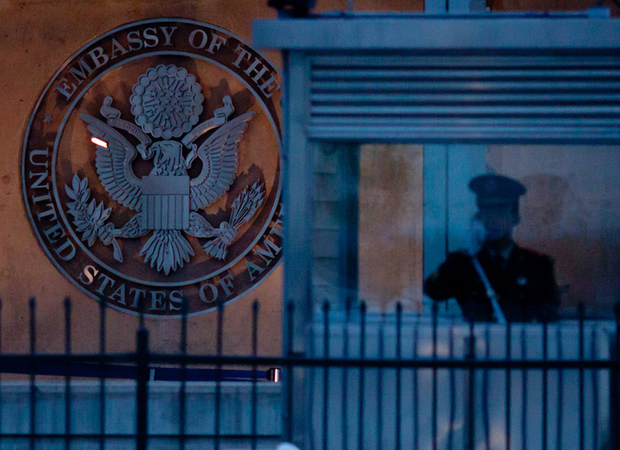In China relatives of Party officials build lucrative businesses on family contacts
on April 30, 2012
When Chinese authorities launched an investigation in 2006 into potential foreign currency violations by Beijing Henderson Properties, the real estate developer called in some curious outside help. It turned to a Chinese investment company with no evident expertise in currency regulations and to a murky Hong Kong foundation with no discernible offices and no listed telephone number.
Apple Q2: It’s All About China
on April 30, 2012
Avatar 2: Made in China?
on April 30, 2012
James Cameron’s film “Titanic” shattered box-office records in China, as it did nearly everywhere else in the world. Its impact was especially shocking in a market that was captive to a conservative, state-dominated film industry, with no ability to produce a blockbuster of its own. Mr Cameron’s ballyhooed “Avatar” broke China’s records again in 2009 and 2010, despite more than a decade of development. Now the film bureaucrats in Beijing have a chance to accomplish something that would have been unthinkable until very recently: co-producing Mr Cameron’s “Avatar” sequels.
Bo Xilai’s Downfall Tied to Wiretapping
on April 30, 2012
When Hu Jintao, China’s top leader, picked up the telephone last August to talk to a senior anticorruption official visiting Chongqing, special devices detected that he was being wiretapped — by local officials in that southwestern metropolis. The discovery of that and other wiretapping led to an official investigation that helped topple Chongqing’s charismatic leader, Bo Xilai, in a political cataclysm that has yet to reach a conclusion.
In China, Blame for USC Victims
on April 30, 2012
The malevolence this tragedy generated grows out of deep divisions within China. The chasm between haves and have-nots is growing ever wider, and with it has come resentment that extends to the approximately 160,000 students a year — enough to populate three schools the size of UCLA — who elect to study in the United States.
Beijing Dilemma: Is Chen Guangcheng the Next Fang Lizhi?
on April 30, 2012
The Chinese lawyer Chen Guangcheng, blind since childhood, self-taught in the law, defender of women’s rights to resist forced abortion, thorn in the side of local despots in his home district of Linyi in Shandong province, veteran of a four-year prison sentence on the spurious charge of “organizing a mob to disturb traffic,” and since then victim—along with his wife and daughter—of extra-legal house arrest and occasional beatings, has escaped confinement.

China’s Top Future Leaders to Watch
Biographical Sketches of Possible Members of the Post-2012 Politburo (Part 1)
on April 30, 2012
The composition of the new Politburo that will take power in late 2012, including generational attributes and individual idiosyncratic characteristics, group dynamics, and the factional balance of power, will have profound implications for China’s economic priorities, social stability, political trajectory, and foreign relations. To a great extent, these leaders’ political position and policy preferences are often shaped or constrained by their personal experience, leadership expertise, factional affiliation, and bureaucratic portfolio. It would be helpful for China-watchers overseas to grasp the biographical features of the top Chinese leaders who will likely govern the country for most of this decade and beyond. This series from China Leadership Monitor provides short biographies for the twenty-five to thirty possible members of the new Politburo.
Prospects for Solidarity in the Xi Jinping Leadership
on April 30, 2012
It may be true, as is often observed, that if all the world’s economists were laid end to end, they would never reach a conclusion. It is all the more notable, therefore, that an increasing number of observers of China’s economy are skeptical that the high rate of growth sustained over the past three decades is likely to continue much longer. In the past, China’s leadership has weathered economic stress adroitly, most recently, in blunting the impact of the 2008 world economic crisis. However, the Xi Jinping leadership that is about to take the helm later this year is likely to be more diverse in its outlook, credentials, and experience. And so if projections of trouble in China’s economy ahead are accurate, then it is reasonable to inquire into the prospects of an oligarchic leadership around Xi maintaining collective solidarity and providing effective policy responses.
Guangdong Leads Calls to Break up “Vested Interests” and Revive Reform
on April 30, 2012
In September 2011, a protest in a Guangdong village threatened to embarrass the province and its party secretary, Wang Yang, who is a candidate for membership on the powerful Politburo Standing Committee when the 18th Party Congress meets later in 2012. Not only did Wang Yang intervene decisively to defuse tensions, but he also used a plenary session of the provincial party committee to launch an attack on “vested interests” and to call for reviving reform. Guangdong’s outspokenness was quickly echoed in the pages of People’s Daily, scholarly reports, and liberal opinion. The long-term implications are not yet clear, but the revival of reform rhetoric suggests a contentious year of politics as the country heads into the 18th Party Congress.



